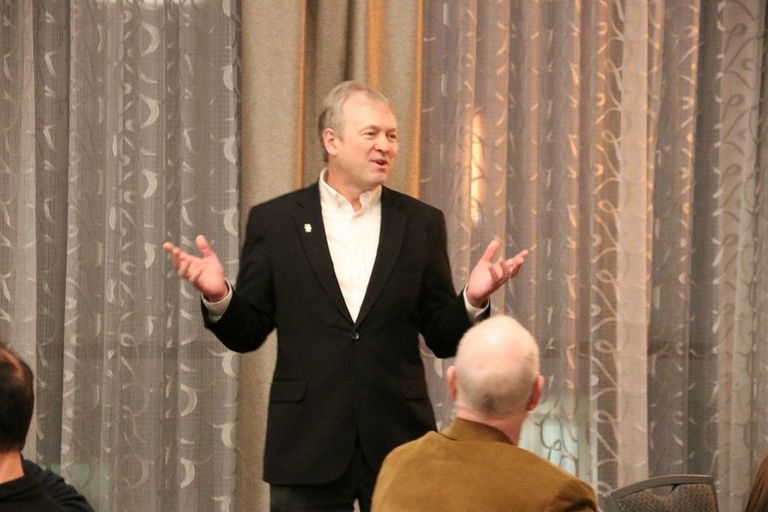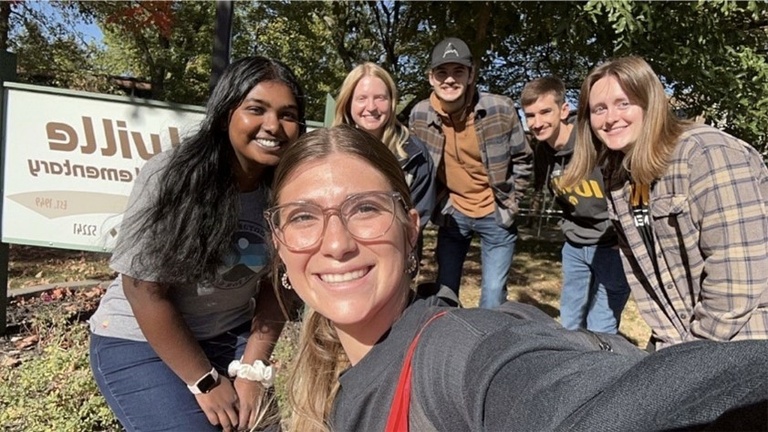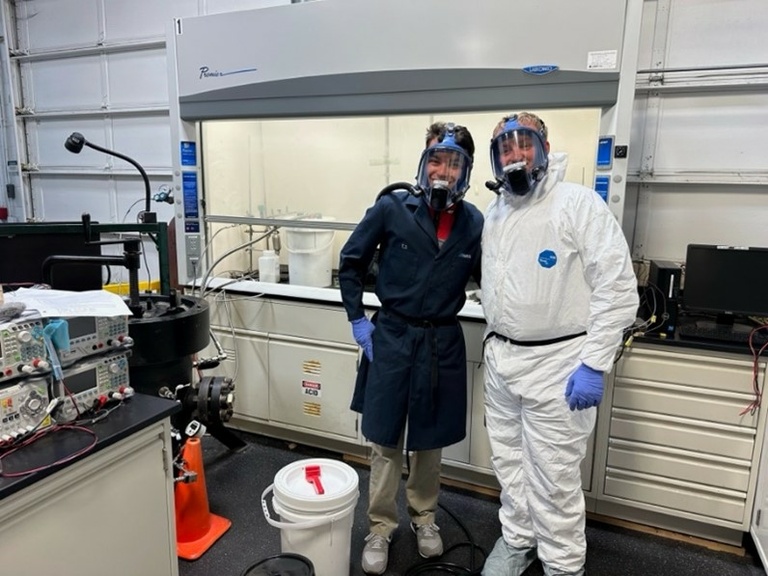Advisor’s Corner
Prof. David Murhammer, Professor and AIChE Student Chapter Advisor
Greetings to Hawkeye Chemical Engineers!! This Fall 2024 issue of our AIChE Student Chapter Newsletter begins with an article about the participation of University of Iowa students at the AIChE Annual Student Conference held October 25-28 in San Diego, California. This article summarizes the many awards received by our students and their participation in many events. Of particular interest, the University of Iowa AIChE Student Chapter received an Outstanding Student Chapter award for the 20th consecutive year (longest active streak among AIChE student chapters) and for the 31st time in the last 32 years. Furthermore, the University of Iowa ChemE Jeopardy team won the national championship for the 6th time as discussed in the second article in this newsletter. Our ChemE Jeopardy teams have also finished second 4 times. This was the 14th year of this competition, and no other university has won the competition more than once.
Other articles in this issue include discussions of (i) our K-12 program in which our students conduct experiments with students at a local elementary school, (ii) the 40th anniversary celebration of the University of Iowa Omega Chi Epsilon chapter, (iii) our students’ attendance at the Society of Women Engineers (SWE) conference in Chicago, Illinois, and (iv) the summer internship experiences of Liam Horan and Caleb Coulthard at Fauske & Associates.
Any comments about the newsletter should be sent to me at david-murhammer@uiowa.edu.
AIChE Regional Conference
Ashley Sheehan
The 2024 AIChE Annual Student Conference was held in San Diego, California from October 25th through the 28th. Sixteen University of Iowa students attended the conference to participate in several events or simply support their classmates. The students boarded the plane in Cedar Rapids at 5 AM on October 25th, excited to arrive in San Diego by 12 PM Pacific Standard Time.
After arriving at the San Diego International Airport, the students took Ubers to their hotel to drop off their bags before exploring the city a bit before the conference began that evening. Several students enjoyed delicious Mexican food for lunch before they walked around the San Diego Marina and spent time chatting at a coffee shop. Many students greatly appreciated how close the conference center was to a dog park, allowing them to catch glimpses of excited puppies before impressing the world with their skills at the Student Conference!
To kick off the conference at 6 PM, Riley Coulter and Anna Blobaum presented a 20-minute workshop on how AIChE at the University of Iowa supports K-12 students through its K-12 Outreach Program. They did an excellent job explaining the program and providing tips for ensuring its success. Several students from other schools stayed around to receive personal advice on starting a K-12 program at their own institutions. Immediately after the presentation, the seniors who attended the conference were invited to join the Senior Mixer, where students were encouraged to enjoy drinks and charcuterie while networking with their peers.
The following day began with a few students joining Professor Murhammer for breakfast and the keynote speech. Several speakers emphasized the importance of recognizing that there is still much to learn after graduation and that career paths can differ significantly from expectations. The students left the conference center to visit the San Diego Farmer’s Market before grabbing lunch at a local café. That afternoon, the ChemE Jeopardy team studied for several hours to prepare for their first round of the ChemE Jeopardy Competition that night. The other students enjoyed some free time to work on homework and check out the ChemE Car Competition posters. The University of Iowa ChemE Jeopardy team (Anna Stinson, Colin Houts, Liam Horan, and Josiah Powers) won the first round! To celebrate, the entire group went to Joe’s Crab Shack to enjoy some California seafood!
The morning of Sunday, October 27th began with the University of Iowa students attending the International ChemE Jeopardy Competition. Following this, the final round of the National ChemE Jeopardy Competition took place, where the University of Iowa team triumphed thanks to their impressive math skills and comprehensive knowledge of Taylor Swift facts! Following the big win, the students went to the awards ceremony, where Anne Wu was recognized for being the top of her class, Liam Horan and Josiah Powers were recognized for their outstanding accomplishments, and the ChemE Jeopardy team was honored for winning the national competition. To celebrate the great accomplishments, the University of Iowa group went out with Professors Murhammer, Nuxoll, and Seo to a local Italian restaurant. Professors Nuxoll and Seo attended the conference to promote the University of Iowa’s graduate chemical engineering program.
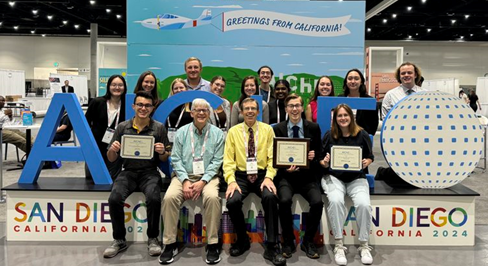
On Monday, October 28th, the final day of the conference, there were PowerPoint and poster presentations. Josiah Powers presented a PowerPoint on the research conducted in Professor Nuxoll’s lab. Following Josiah’s presentation, three University of Iowa students (Klaertje Hesselink, Cheryl Reuben, and Ashley Sheehan) presented posters on their research. Special congratulations to Klaertje, who received a first-place award for her spectacular poster related to catalysis and reaction engineering! Overall, this conference was a great experience that allowed students to network and be recognized for their talents and remarkable research findings. Everyone who attended this conference was deeply appreciative of the opportunity.
University of Iowa ChemE Jeopardy Team Wins Sixth National Championship
Professor David Murhammer
The University of Iowa won the ChemE Jeopardy National Championship at the 2024 AIChE Annual Student Conference held October 26th and 27th in San Diego, California. This was the most exciting final round in the 14 years of the competition and the most unlikely win for the Iowa team.
Iowa qualified for the national competition with their victory in the Mid-America regional competition held April 6th at the University of Arkansas in Fayetteville, Arkansas. The team members for both the regional and national competitions were Liam Horan, Colin Houts, Josiah Power, and Anna Stinson.
In the national competition Iowa had a preliminary round bye due to winning last year’s competition. In the semi-finals the Iowa team faced Auburn University and University of California, Berkeley. Iowa took the lead early in Double Jeopardy and led UC Berkeley by ~2000 going into Final Jeopardy. Iowa wagered enough to win by 100 if UC Berkeley wagered everything. The final score was Iowa 9700, UC Berkeley 9600, and Auburn 2500.
The finals against Georgia Institute of Technology and University of Maryland, Baltimore County (UMBC) got off to a slow start for the Iowa team with many incorrect answers and quick buzzer responses from the other teams. At the end of single jeopardy, the score was UMBC 1900, Georgia Tech 1300, and Iowa 700. Iowa had a few incorrect answers early in double jeopardy and received a penalty for violating the buzz in rules. After the penalty Iowa was at 0 points and both other teams had over 3000 points. Then Iowa began their comeback without the benefit of daily doubles. They trailed Georgia Tech 5100-5000 with only a 200-point clue remaining on the broad (category: “Flixborough Accident 50th Anniversary,” clue: “Country in which accident occurred.”). Iowa buzzed in first, correctly responded to the clue (“What is England?”) and led 5200-5100 going into final jeopardy (UMBC had 4800). Again, Iowa wagered enough to win by 100 if Georgia Tech wagered everything. All 3 teams correctly responded to the final jeopardy clue and the final score was Iowa 10,300, Georgia Tech 10,000, and UMBC 9400. The Final Jeopardy Category was “Dimensionless Numbers,” the clue was “These are the 3 dimensionless numbers used to determine the mixing power in an agitated and aerated (i.e., sparged) fermenter,” and the correct response was “What are the Reynolds, Power and Aeration numbers?”.
This was the sixth national championship for the University in the 14 years of the competition. Their previous championships were in 2013, 2014, 2020, 2021, and 2023. The University of Iowa has also finished second four times in 2012, 2015, 2019, and 2022.
K-12 Program Update
Anna Blobaum
The fall semester is always an exciting start to a fresh year, and this one was no exception! Our AIChE K-12 outreach program has provided a refreshing perspective on learning science from the midwest to the far west! Here are some of the things we’ve been up to this fall.
In mid-October, our three K-12 coordinators and three volunteers visited Ms. Lienen’s 4th grade class at Coralville Elementary school to do a density experiment. We were so excited to visit a class that was so enthusiastic about science! For our experiment, each student received two empty condiment cups. After a quick safety lesson (the main point being that lab materials are NOT for eating), everyone added a couple spoonfuls each of corn syrup, colored water, and vegetable oil (in that order) to one of their cups. In the other cup, each student added the same liquids in the reverse order after predicting if the order of the layers would change or stay the same as the first cup. Spoiler alert: the liquids’ densities made them stack the same either way! Even though it was a simple experiment, the students were super engaged and had visible “aha!” moments, making it a very fun visit.
Our K-12 Program has plans to revisit this classroom, and others, for more experiments. We welcome all volunteers, as well as ideas for events, experiments, or connections to classrooms to visit.
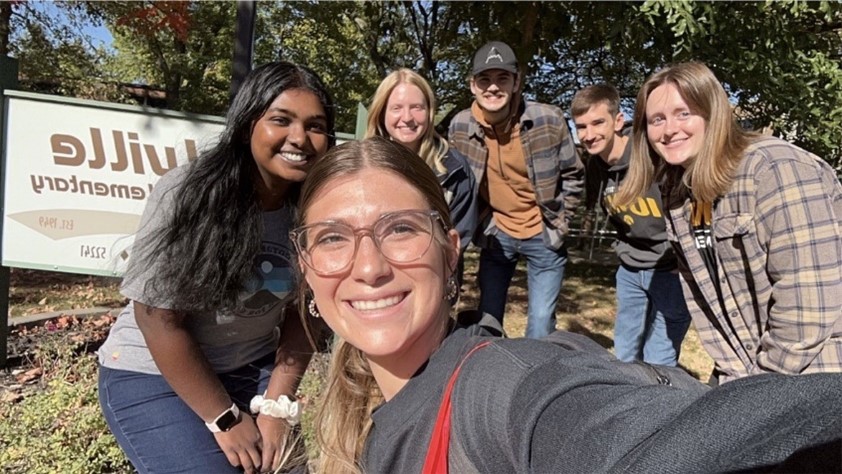
In late October, our lead K-12 Coordinator Riley Coulter and I presented at the National AIChE student conference. Our workshop, titled Empowering Tomorrow’s Innovators: Strategies for a Successful K-12 Program/Event, walked through how our chapter can engage with our community through K-12 outreach, mainly through visiting schools to perform experiments and hopefully hosting events in the future. We explored the importance of K-12 outreach, the many forms it can take, as well as each step of the planning process and some miscellaneous advice.
The workshop was well-attended by our fellow Hawkeyes as well as groups from several other schools hoping to develop their own K-12 Programs. In fact, we are now in contact with student chapters at Michigan State and the University of Illinois at Chicago that are working on building up their K-12 Programs. We also watched a similar workshop by students at Mississippi State University and hope to expand our K-12 program using some ideas that they use, such as doing outreach with girl scout troops. The K-12 outreach crowd has been nothing but supportive- we all have a common goal to get more kids into STEM!
This semester has been a successful one for our K-12 outreach and has left us with lots of ideas for next semester. We are excited to keep it up and keep growing!
Omega Chi Epsilon 40th Anniversary Celebration
Anna Stinson
On November 1st, 2024, the University of Iowa’s chapter of Omega Chi Epsilon (OXE) celebrated the 40th anniversary of its inception. OXE is the national chemical engineering honor society, and it was established “to recognize outstanding students and to promote scholarship and the chemical engineering profession”. The Alpha Phi chapter of Omega Chi Epsilon was started at the University of Iowa in February of 1984 lead by President Rhett Livengood. Activities held by the Alpha Phi chapter in its early years include a tutoring program for underclassmen chemical engineering students, organizing the college-wide engineering open house, and distributing the annual chemical engineering newsletter. Fast forward to 2024 and the University of Iowa’s chapter of Omega Chi Epsilon, led by me, runs academic help sessions for underclassmen and holds a semi-annual liquid nitrogen ice cream fundraiser.
The 40th anniversary celebration started off with three graduate students from the Chemical and Biochemical Engineering department giving 3-minute thesis presentations. Jonah Marks, Bolaji Oladipo, and Abdullahi Alausa presented their graduate research to a group of OXE alumni and current members. Next, alumni were taken on a tour of the Unit Operations Laboratory to see the updated lab equipment.
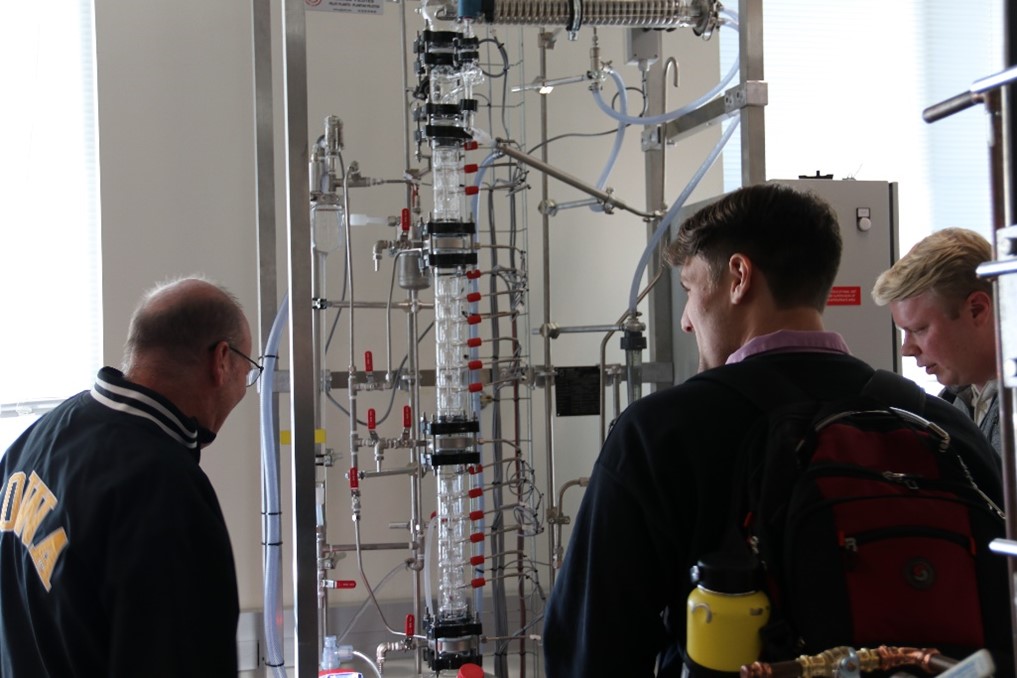
Following the lab tour, a ceremony was held to initiate 12 new members into Omega Chi Epsilon. Then, attendees headed over to the Hilton Garden Inn to enjoy a catered dinner. Current members socialized with alumni and CBE faculty. Several members of the inaugural class of OXE members, as well as the first faculty advisor, Dr. Gregory Carmichael, were in attendance.
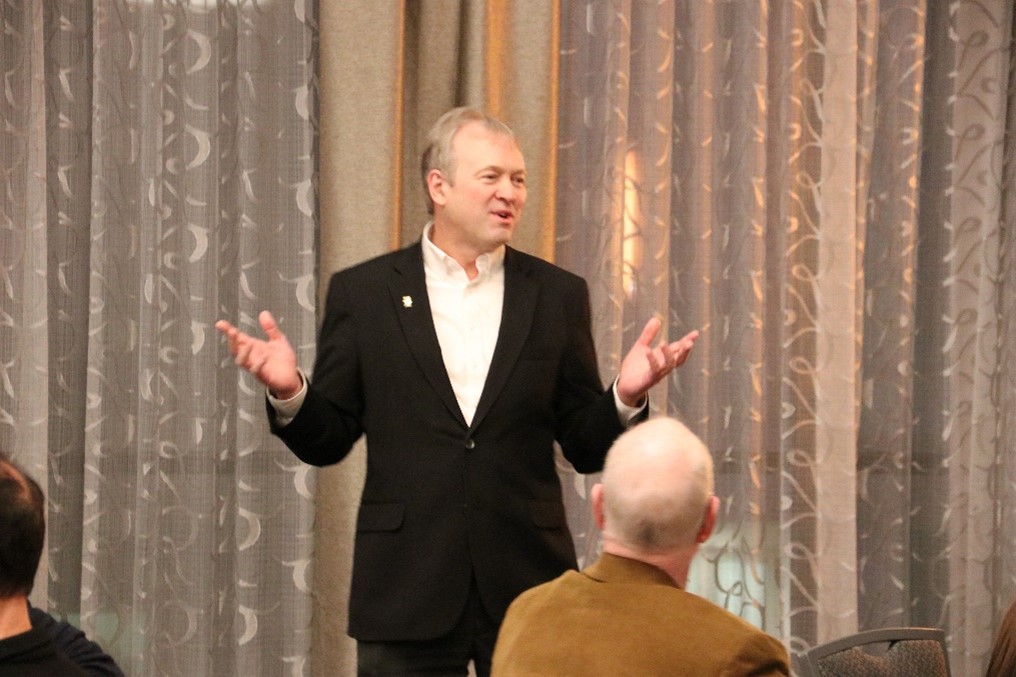
The celebration was a great chance for chemical engineering students to connect with alumni and share their experiences at the University of Iowa. I would like to thank Dr. Alec Scranton and Rhett Livengood for their help planning this event as well as the Chemical and Biochemical Engineering Department for their support.
Society of Women Engineers National Conference
Elise Koltonowski
The National Society of Women Engineers (SWE) hosts a conference every fall that SWEsters from the University of Iowa attend each year!
This year the conference was close to home at McCormick Place in Chicago, Illinois compared to past attended conferences in Los Angeles, California and Houston, Texas. It allowed for a record number of 30 attendees from SWE at Iowa, including seven chemical engineering students! We also got to see our department’s own Dr. Jennifer Fiegel represent the College of Engineering and the Department of Chemical and Biochemical Engineering at the career fair.
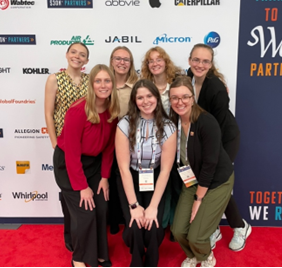
The national conference hosts a career fair with over 450 employers and over 21,000 attendees in 2024. Attending this conference as a student allows interaction with the community of SWEsters all over the nation. Many attendees from Iowa were able to connect with those they had met on previous internships, research opportunities, or from engagement through SWE socials.
Alongside the networking opportunities, the conference is also a chance to learn more about engineering after your undergrad, with sessions dedicated to workforce experiences, common skills, and how to navigate engineering as a woman. Many students participated in skill-building workshops that covered everything from technical skills to leadership and professional development, helping them prepare for their future career.
Students were also able to explore the Chicago area and learn practical travel skills such as how to plan their own agenda and how to work with a large group of people. The executive planning team; National Conference Chair Kalyn Zitsch (Mechanical Engineering), Vice President Internal Ella Nail (Biomedical Engineering), and President Elise Koltonowski (Chemical Engineering); got to practice many practical skills while preparing the 30 attendees for the trip as well as leading the group for the three days of conference.
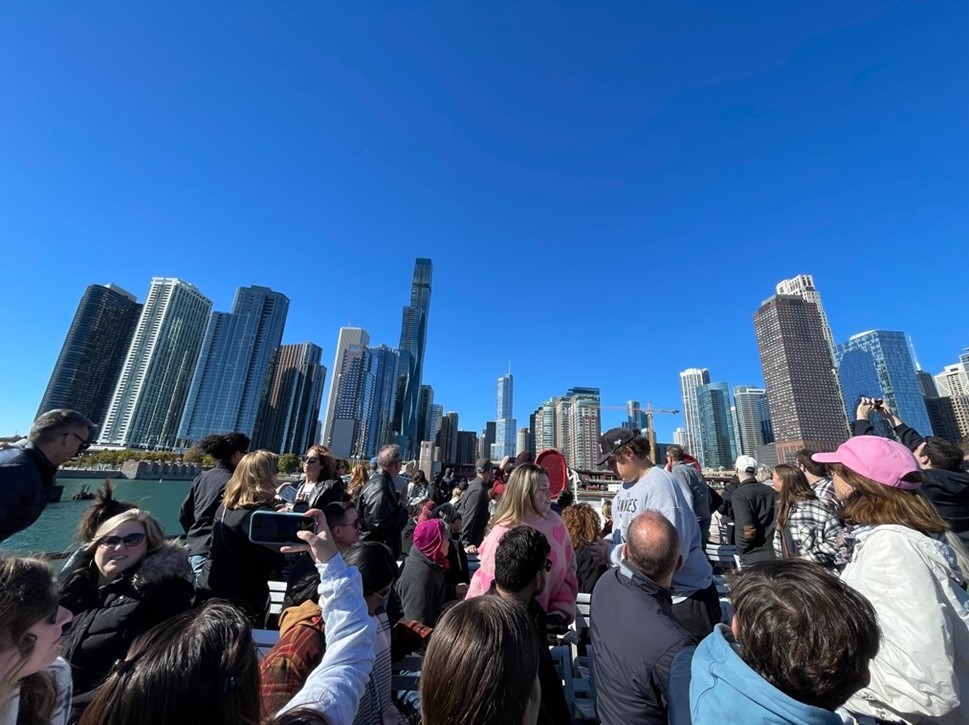
At one of the largest engineering career fairs, students received same-day interviews with many companies allowing them to secure internships and full-time jobs. Companies Chemical Engineers from Iowa gained opportunities with include Dow Chemical, GE Aerospace, GE Vernova, Honeywell, 3M, and more!
Overall, attending the SWE Conference as a student offers an empowering experience, allowing students to develop professionally, personally, and academically. It’s an invaluable event for anyone serious about building a successful and impactful career in engineering while being part of a community that is committed to supporting and elevating women in STEM.
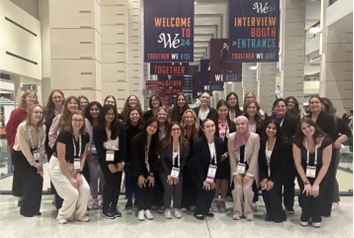
Internship Spotlight: Fauske & Associates
Liam Horan
During the summer, Caleb Coulthard and I completed a Process Safety Internship at Fauske and Associates in Burr Ridge, Illinois. Our internship was centered around developing Fauske’s offerings for thermal runaway testing for batteries, specifically lithium-ion batteries.
As lithium-ion batteries become more widespread in everyday life, the concerns over their safety, particularly their risk of fire and explosion has grown exponentially. In the past decade, several high-profile incidents have demonstrated this risk, such as the Samsung Galaxy Note 7, hoverboards, and various Tesla battery fires. These fires and explosions are caused by internal short circuits within the battery, and the high currents and overheating associated with them raise the internal contents to their autoignition temperatures. The violent, self-fueled decomposition of battery products can release several toxic substances, including lithium, hydrofluoric acid, and NOx gases. As a result, it has become of high industrial interest to find ways to develop and test protections for lithium-ion batteries, and several process safety testing firms, including Fauske, are developing offerings to this end.
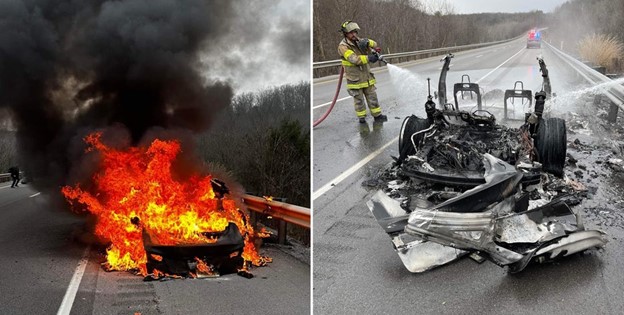
Caleb and I mainly utilized the Vent Sizing Package 2 (VSP2) Calorimeter, an adiabatic calorimeter typically used for reactive vent sizing, to characterize the properties of battery cell thermal runaway.
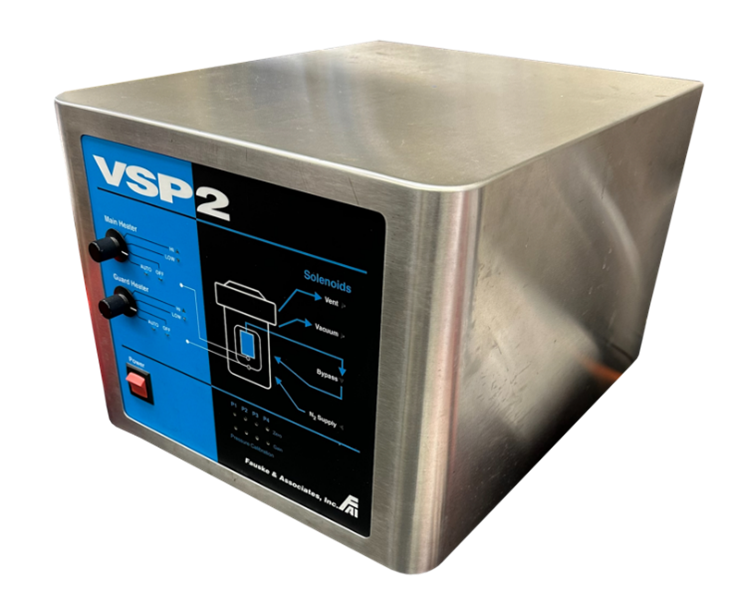
Following the UL9540a standard for cell-level battery testing, the batteries were subjected to several different forms of abuse to induce thermal runaway, including overheating, application of an external short circuit, and mechanical penetration. The development of each test often took weeks as we took time to painstakingly design apparatuses and systematically troubleshoot any issues. To ensure safe containment, each battery cell was placed in a large, air-tight carbon steel vessel. These tests yielded highly energetic results, sometimes reaching temperatures above 1200ºC and pressures above 138 bar. After each test, an extensive cleanup procedure was followed to ensure that all hazardous vapors were removed from the testing. Here, skills learned in Chemical Process Safety like pressure purging were directly applied, and the concentrations of hazardous gases were monitored with gas detection tubes. Before opening the containment vessel, Caleb and I had to don extensive personal protective equipment, including a Tyvek Suit, Tyvek sleeves, nitrile, butyl, and laminate gloves, and a supplied air respirator.
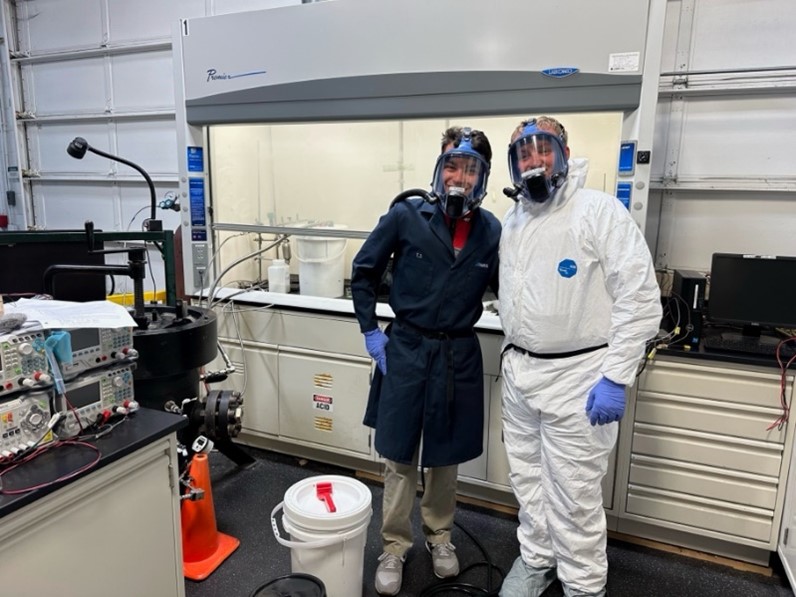
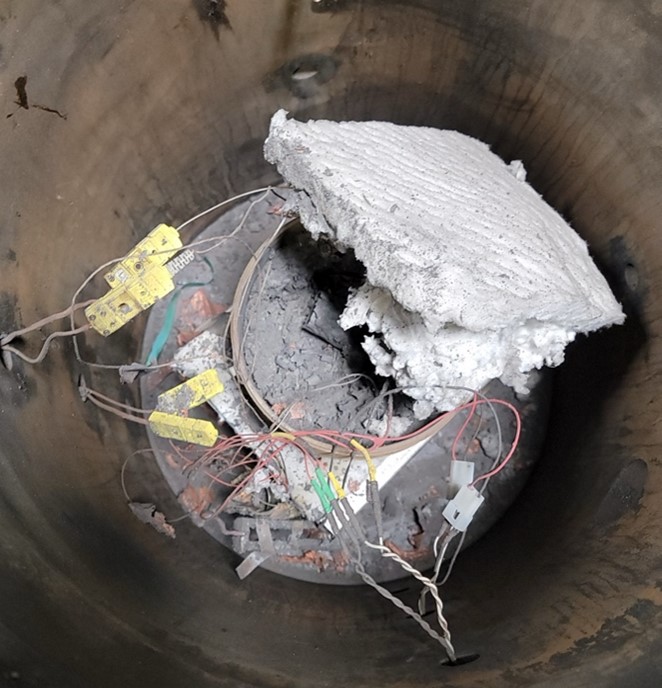
Following the UL9540a standard for cell-level battery testing, the batteries were subjected to several different forms of abuse to induce thermal runaway, including overheating, application of an external short circuit, and mechanical penetration. The development of each test often took weeks as we took time to painstakingly design apparatuses and systematically troubleshoot any issues. To ensure safe containment, each battery cell was placed in a large, air-tight carbon steel vessel. These tests yielded highly energetic results, sometimes reaching temperatures above 1200ºC and pressures above 138 bar. After each test, an extensive cleanup procedure was followed to ensure that all hazardous vapors were removed from the testing. Here, skills learned in Chemical Process Safety like pressure purging were directly applied, and the concentrations of hazardous gases were monitored with gas detection tubes. Before opening the containment vessel, Caleb and I had to don extensive personal protective equipment, including a Tyvek Suit, Tyvek sleeves, nitrile, butyl, and laminate gloves, and a supplied air respirator.
Following cleanup, Caleb and I prepared reports to convey the findings of each test to aid in the better development of standard procedures for battery testing for clients.
Aside from laboratory testing, we took on several other responsibilities at Fauske, as many of our assignments were catered to our professional interests. I directly designed new testing apparatuses for battery cells, while Caleb did a large amount of work to develop a nail penetration device and improve existing testing equipment. Additionally, both of us worked together to refine procedures and create standardized forms for each test, allowing for easy aggregation of results. I also worked to generate standard operating procedures for new equipment as well as do a bit of programming work for other business areas, allowing me to experience different aspects of chemical process safety. Caleb and I improved business offerings for Fauske and Associates by generating various technical forms and information for distribution to customers seeking testing, and we were even allowed to sit in a few consulting calls.
Outside of work, we enjoyed several events with our fellow interns and coworkers, including an annual picnic, trips to a local brewery, or attending a local car show. It was a great experience to be able to interact with so many different scientific perspectives daily and put our heads together to solve problems.
Overall, our work at Fauske provided many great opportunities for learning and professional growth. We both thoroughly enjoyed our time there and are thankful for the chance to contribute to such meaningful work.
Acknowledgements
Thank you to the AIChE Officers for their hard work and contributing efforts to make our AIChE Student Chapter a successful organization!
President: Liam Horan
Vice President: Cheryl Reuben
Secretary: Sydney Schulte
Treasurer: Ashley Sheehan
Newsletter Editor: Anna Stinson
Webmaster: TJ Kimm
Historian: Gabi Fiedor
Social Chair: Caleb Coulthard
ChemE Car Chairs: Patrick Koehler and Joshua Santiago
K-12 Program Coordinators: Riley Coulter, Anna Blobaum, and John Syata
Volunteer Chair: Eric Hou
Advisor: Professor David Murhammer
Editor-In-Chief Anna Stinson would also like to thank the following people for their support and contributions to the Spring 2024 AIChE Student Chapter Newsletter:
Faculty Advisor: Professor David Murhammer
Contributors: Ashley Sheehan, Professor David Murhammer, Anna Stinson, Anna Blobaum, Elise Koltonowski, Liam Horan
Your help is much appreciated!
